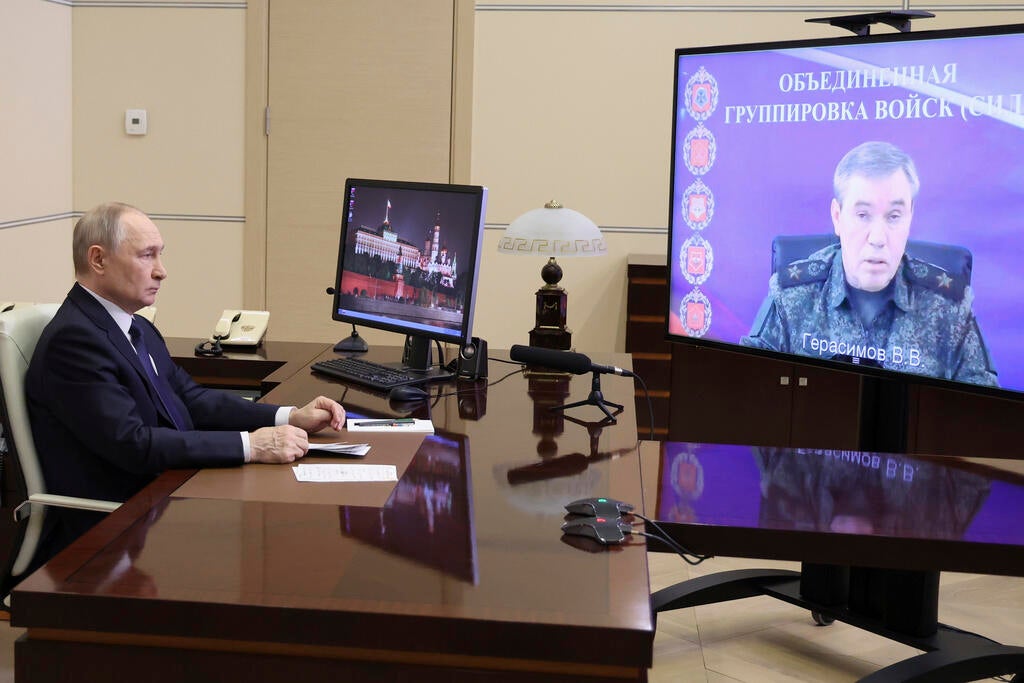All Ukrainian forces have been expelled from Russia’s Kursk region, according to claims made by the Russian military on Saturday.
General Valery Gerasimov, Chief of the General Staff of Russia’s Armed Forces, informed President Vladimir Putin during a video conference that the village of Gornal, the last Ukrainian-held settlement in the region, had been “liberated.”
“Today, the last settlement in the Kursk region, the village of Gornal, has been liberated from Ukrainian forces,” Gerasimov announced, as reported by AFP.
Ukrainian officials have not confirmed Russia’s claims. In its Saturday morning update, Ukraine’s General Staff stated that Ukrainian forces continue to resist Russian advances in the Kursk sector, countering assertions that they had been fully dislodged.
President Putin congratulated Russian troops and commanders, proclaiming that Kyiv’s operation had “completely failed.”
“The complete defeat of our enemy along Kursk’s border region creates the right conditions for further successes for our troops and in other important areas of the front,” Putin stated.
Ukraine’s audacious offensive into Kursk, launched in August 2024, stunned even its Western allies. At its peak, Ukrainian forces controlled approximately 500 square miles of Russian territory, aiming to leverage the gains in potential ceasefire negotiations. However, by early 2025, Russian forces had gradually reversed Ukrainian advances, culminating in Saturday’s announcement.
With Russian troops now fully securing the border, concerns are growing for Ukraine’s neighboring Sumy region, as Russian forces prepare to increase pressure there, according to AFP.
In a striking development, Gerasimov confirmed that North Korean soldiers fought alongside Russian troops during the defense of Kursk.
“North Korean soldiers participated in combat missions shoulder to shoulder with Russian servicemen during the repelling of the Ukrainian incursion,” Gerasimov said, praising their “high professionalism, fortitude, courage, and heroism.”
The admission follows months of speculation. In the fall of 2024, Ukraine, the U.S., and South Korea alleged that Pyongyang had deployed between 10,000 and 12,000 troops to Russia, claims that Moscow and Pyongyang had previously dodged with vague denials.
Meanwhile, diplomatic efforts to end the conflict appear to be gaining momentum.
On Saturday, U.S. President Donald Trump met with Ukrainian President Volodymyr Zelenskyy at St. Peter’s Basilica in Vatican City, following the funeral of Pope Francis. The two leaders spoke privately for approximately 15 minutes and agreed to continue discussions later the same day, according to Ukrainian presidential spokesman Serhii Nykyforov.
White House Communications Director Steven Cheung described the meeting as “very productive.”
President Trump, who departed Italy shortly after the funeral, expressed optimism about ongoing negotiations. On Friday, Trump’s Middle East adviser, Steve Witkoff, had met with Putin, and Trump stated that both sides were “very close to a deal.”
Russian Foreign Minister Sergey Lavrov echoed that sentiment in an interview with CBS’s Face the Nation, suggesting that a potential agreement is within reach, though “some elements need to be fine-tuned.”
“The President of the United States believes, and I think rightly so, that we are moving in the right direction,” Lavrov said.
In a statement Friday night, President Zelenskyy emphasized the urgency of securing an unconditional ceasefire.
“Real pressure on Russia is needed so that they accept either the American proposal to cease fire and move towards peace, or our proposal, whichever one can truly work and ensure a reliable, immediate, and unconditional ceasefire, and then, a dignified peace and security guarantees,” Zelenskyy said.
As talks intensify, the world watches closely, with hope, with caution, and with the heavy weight of a war that has already rewritten history.

